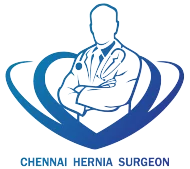A hernia is a protrusion that most often contains omentum or parts of the intestine.
Hernias can cause a lot of pain. But some may go unnoticed for years. Hernias are operated most of the time to prevent adverse scenarios.
Umbilical and ventral hernias are hernias that occur in front of the abdomen.
An umbilical hernia is also a ventral hernia, as ventral hernias include all the hernias that occur in the anterior region of the abdomen.
Thus, a ventral hernia includes umbilical, paraumbilical, epigastric, and incisional hernias.
Table of Contents
ToggleKey Differences Between Umbilical and Ventral Hernia
| UMBILICAL HERNIA | VENTRAL HERNIA |
|---|---|
| A specific term denoting the hernia that occurs at the weak spot of the navel region or belly button. | A generic term indicating all hernias that occur on the abdominal front. |
| Occurs in infants, especially premature babies, and in adults. | Occurs mostly in adults. |
| Contents of hernia push through the weak spot in the navel or belly button area. | Hernia pushes through a weak spot in the abdominal wall. |
| At times would close over time in infants without being operated upon. | It can be mild and persist for years with no requirement for surgery. |
| Can be identified through any soft swelling near the belly button. | Identified through abnormal swelling in any part of the abdomen. |
| Usually creates no pain in infants. Adults can feel discomfort. | Sharp pain, vomiting, and constipation would be associated. |
| Would require surgery if discomfort persists. | It would require surgeries most of the time. |
| Is congenital in infants. Obesity, heavy lifting, long-standing coughs, etc also cause it. | Caused due to heavy lifting, pregnancy, obesity, abdominal injury, weakened surgical incision covering, and so on. |
| The paraumbilical hernia is an indirect umbilical hernia. | Includes umbilical, incisional, inguinal, and other abdomen anterior-appearing hernias. |
Symptoms of Umbilical and Ventral Hernia
The symptoms of both umbilical and ventral hernia are more or less the same.
Hernias are usually bulges that are either reducible or irreducible.
Reducible hernias are those that can be pushed back inside through the opening of the abdominal wall.
Irreducible hernias are those that have become obstructed or strangulated.
Obstructed hernias mean that a part of the intestine has got trapped inside the hernia. This will block gas or motion, resulting in severe pain and vomiting. The abdomen may also begin to swell.
Strangulated hernias indicate the blocked blood supply to the parts of the body trapped inside the hernia. Cut off blood supply to the intestine or omentum incarcerated inside the hernia can result in tissue death. Blood supply can be restored through immediate surgery.
Obstructed and strangulated hernias call for urgent surgical repair. They may turn fatal.
| UMBILICAL HERNIA | VENTRAL HERNIA |
|---|---|
| The bulge becomes discolored. | The bulge becomes visible while bending, squatting, or straining oneself physically. |
| Painless in infants most of the time. | Causes little to no pain during the early stages. Can get painful around the protrusion area over time. |
| Can cause discomfort in the navel region. | Causes discomfort while overexerting. |
| Can cause constipation. | Causes constipation with thin stools. |
| Associated with fever, vomiting, tenderness, and pain in the affected area. | Associated with nausea, vomiting, and fever due to pain. |
Causes of Umbilical and Ventral Hernia
An umbilical hernia can be congenital. A ventral hernia on the hand is caused only in adults.
Causes of Umbilical Hernia
Umbilical hernias are caused by:
- Unclosed abdominal walls during birth
- Obesity
- Repeat pregnancies
- Chronic constipation pressurizing the abdomen
- Heavy lifting
Strainful activities or exercises - Excessive abdominal fluid (ascites)
Causes of Ventral Hernia
Ventral hernias are caused by:
- Heavy lifting
- Physical overexertion
- Obesity
- Pregnancy
- Diabetes
- Long-term coughing
- Abdominal injury
- Weakened incision closures
Treatment for Umbilical and Ventral Hernias
Umbilical and ventral hernias can be easily treated nowadays owing to the advancements in the medical field.
Unless the hernia is strangulated or obstructed the hernia repair is executed as a planned procedure.
Hernias can operated either through open surgery or through minimally invasive procedures. The size, number, and degree of severity are considered before choosing the surgery type.
Treatment for Umbilical Hernia
An umbilical hernia is not repaired in infants as there are no possibilities for intestines to get strangulated in them. If the situation persists beyond three years of age in a child, the hernia is suggested to be repaired.
Umbilical hernias in adults are mostly advised to be repaired as they can cause severe pain over time. Based on the severity and urgency the kind of surgery is chosen. It can be repaired through open, laparoscopic, or robotic surgery.
Treatment for Ventral Hernia
Ventral hernia is normally advised to be repaired through surgery. Laparoscopic, robotic, and open surgery facilities are available for ventral hernia treatment. The surgeon would prescribe the best mode of repair based on the severity and necessity of the hernia.
Recovery Time for Umbilical and Ventral Hernias
With advanced surgical procedures, hernia repair does not require a longer hospitalization period. The recovery period is also quicker. Patients who had undergone umbilical or ventral hernia procedures would require a resting period of two weeks.
Works can be resumed after four to five weeks. Yet it is best to not lift heavy objects or be involved in strenuous activities for at least two months.
The recovery period ultimately depends on the health status and medical history of the patients as well.
Conclusion
Umbilical and ventral hernias are commonly occurring hernias and there is no need to worry about it.
There are numerous advanced facilities available to treat them nowadays. Visit a nearby hospital to consult a hernia specialist regarding any symptoms you find related to hernia.
Follow the physician’s prescriptions and have a healthy recovery.
To clear your queries on umbilical and ventral hernias contact a hernia specialist.
Dr. K. Amilthan MBBS., MS., FMAS., FALS.
Heal Your Hernia Now:
- 20+ Years of Experience
- 1,000+ Surgeries
Your Journey to Wellness Begins with us.
FAQ's
Yes, an umbilical hernia is also a ventral hernia. Ventral hernia includes all the hernias appearing on the anterior region of the abdomen. The cause for umbilical and ventral hernia may vary at times.
Infants are prone to umbilical hernia. Unclosed abdominal walls during birth can result in hernia. If the case of hernia persists beyond three years of age, consult a hernia specialist to remove it.
Hernias would require surgical repair. If you feel your hernia bulge to have hardened and caused increasing pain, consult a hernia specialist immediately.

Dr. Amilthan
Dr. Amilthan is a renowned laparoscopic hernia surgeon based in Chennai, with over 20 years of experience in general surgery. He completed his MBBS and MS in General Surgery at Kilpauk Medical College and Government Royapettah Hospital in Chennai.
- All Posts
- Hernia Blog

Which Doctor should you consult for Hernia? You can Consult a general surgeon or a hernia specialist for evaluation and...

A hernia occurs when an organ or any other part of your body pushes through the muscle and surrounding tissue...

An inguinal hernia occurs when the organs push through and bulge against the weak muscles of the abdomen. An effective...

